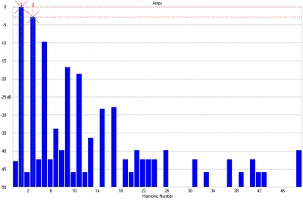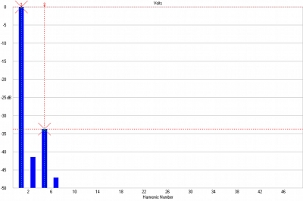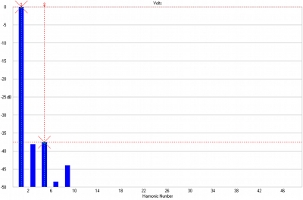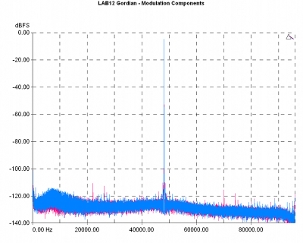about Audio, High Fidelity
& Home Entertainment technologies
pid: 607-2025/10/01 (v1.2)
Privacy Policy

Gordian's lab evaluation included two separate phases, a direct and an indirect phase. During the direct evaluation, long-term power quality measurements before and after the filter with a Fluke 43B analyzer were taken. The duration of each measurement was four hours and we chose three different day periods, during noon, afternoon and evening to meet different usage profiles and different mains states in the area where the test was carried. Measurements include frequency domain distortion analysis of both the voltage and current waveforms. All measurements were made with the same load on the line, a USB DAC/preamplifier, a laptop computer connected to its power supply/battery charger and the Parasound HCA3500 power amplifier we use regularly. During the indirect evaluation, measurements were made of the noise performance of a device which was alternatively powered through the Gordian or directly through a mains wall outlet. The USB DAC was the same used in the direct evaluation phase. Measurements included the signal modulation noise (both narrow and wideband), noise components and noise interference.
For starters, however, an interesting first measurement are the time domain waveforms of both voltage and current. The relevant diagram clearly displays the apparent sinusoidal form of the voltage and the typically distorted shape of the current, a standard situation which arises when a linear power supply (with a rectifier circuit and a capacitor filter) is present. This diagram explains why current distortion is almost always large, and why a power analyzer, such as the one included in the Gordian (or the Fluke 43B), offers a quite "live" current FFT analysis.
For argument's sake, one can study these measurements before and after the filter. The differences are not impressive (partly because the waveform is inherently distorted -this is not just high-frequency noise infused to the circuit- and partly because even if its outputs are not directly used, Gordian seems to offer an improvement just by being connected to the network. Nevertheless, one can distinguish a systematic reduction in the level of the first odd harmonics. This reduction, however, is marginal and based on the average distortion values for all measurements, improving the distortion figure of the current waveform does not exceed 1%. This could be a reasonable finding since the distortion here depends more on the load and less to high-frequency noise.
Gordian seems to have a larger effect on the voltage waveform distortion, though. Based on the average distortion values for all the relevant measurements, the improvement reaches a 5%. By observing the relevant graphs, one concludes that Gordian tends to suppress both the third and fifth harmonic, which were the most prevalent in these measurements.
DAC interference spectrum shows that the use of the filter offers, indeed, a noise suppression. The gain is about 2dBr relative to the operation without the Gordian being in line with the device being measured. Frequency-wise, based on the location of the components in the graph, one can assume that the effect takes place both in the high-frequency part of the spectrum, with components located away from the signal (the 47.9kHz component in the diagram) and in the low frequencies, with components near the 47.9kHz.
This second case is better analyzed in the narrow band signal modulation noise spectrum which offers high resolution in the frequency domain. Here, it is clear that Gordian somehow reduces intermodulation components visible at ± 100Hz from the fundamental, normally a modulation correlated with the power supply noise.
Noise modulation spectrum (wideband) for a test-DAC. With and without the Gordian (blue and violet curve respectively).
Signal Modulation Noise spectrum (narrowband) for a test-DAC. With and without Gordian (blue and gray curve respectively).
The two measurements above give some clues about the effect Gordian could have on the system and the conditions specific to the measurement session, an effect that "looks" stronger at low frequencies than at high. This is confirmed by the noise and interference spectrum. Here, the noise from the power supply improved by about 1dBu, a small but measurable difference. As a final word, be advised that the effectiveness of any filter device, such as the Gordian, depends, also, both on the quality of the devices connected and on the mains problems that are present. For better or worse, the city area where both the lab and the listening evaluation were performed, offers a power network of good quality, being, mainly, a suburban residential area with reasonable noise pollution, therefore Gordian offered a rather small (but nevertheless noticeable) improvement.
Noise and interference spectrum for a test-DAC.
With and without Gordian (blue and gray curve respectively).
Previous | Next | More Reviews

















